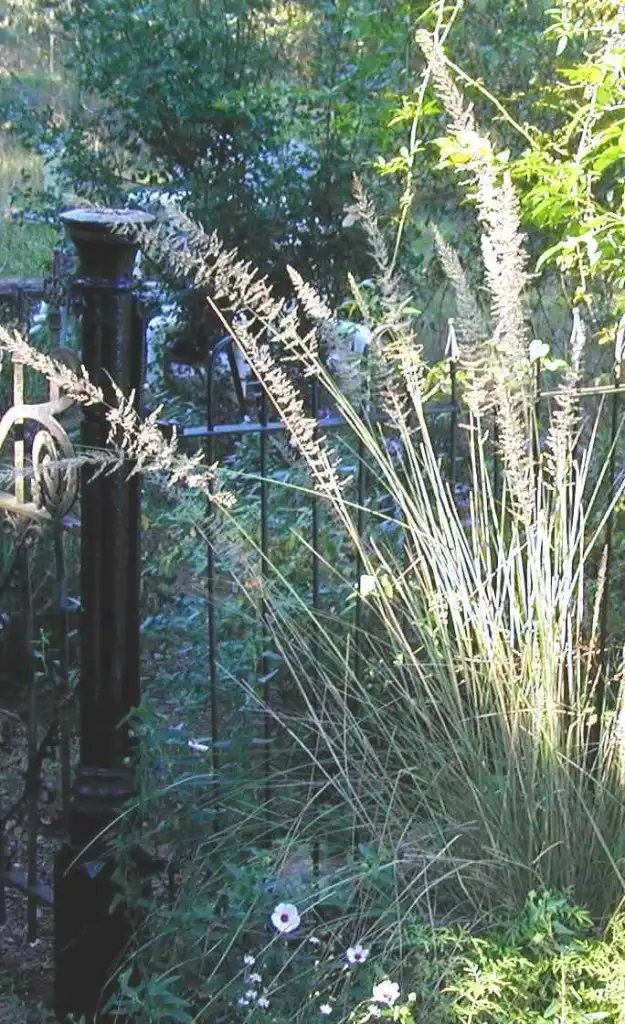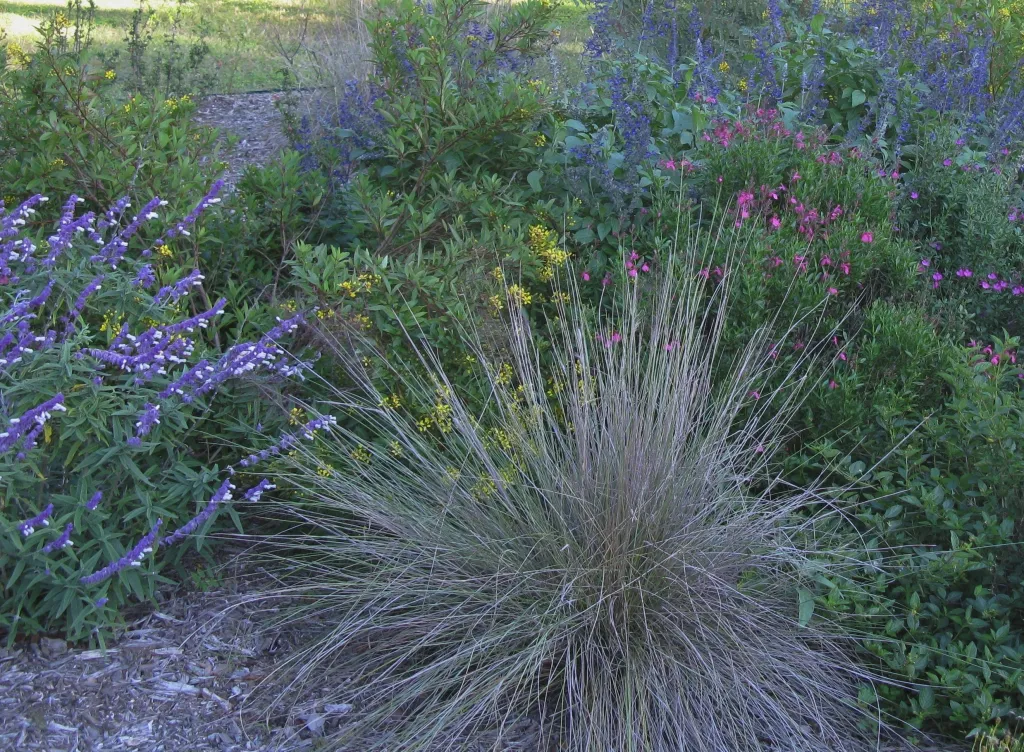Author: Bill Ward
From its beginning in 2000, the Boerne Chapter of the Native Plant Society of Texas wanted to promote native grasses as good landscape plants. As its symbol, the chapter chose the grass commonly called inland seaoats (recently changed to broadleaf woodoats). Over the years, several grasses have been plants of the month for Operation NICE! (Natives Instead of the Common Exotics!).

The grass picked by the NICE! committee to be among the ten favorite plants featured during 2010 is Lindheimer muhly (Muhlenbergia lindheimeri), which is our plant for July-August. Lindheimer muhly was one of the first plants of the month after Operation NICE! was started in 2002. Some of what follows is repeated from a column that appeared in the June 4, 2002, issue of The Boerne Star.
For many people, the thought of grass in the “flower bed” is anathema. For others, any mention of grass for landscaping brings to mind pampas grass, a commonly used exotic.
However, landscapers who use natives have shown that many native grasses can be some of the most effective and easy-to-grow yard plants. Our local native grasses are especially desirable, because they are not browsed by white-tail deer and, once established, require little water and no fertilizer. More and more, both residential and commercial landscaping include native grasses.
Lindheimer muhly is a handsome gray-green bunchgrass that grows two to five feet tall. It sends up long narrow plumes in the fall, and these last through the winter. This muhly grass can be cultivated as an accent plant in much the same way as pampas grass is used.
This bunchgrass likes the calcareous soils that prevail around Beorne and seems to prefer poorly drained soils that hold a little moisture. Even where it flourishes on steep slopes, it is generally growing on or adjacent to clayey layers associated with intermittent hillside seeps. Lindheimer muhly, however, does survive long periods of drought. It thrives in full sun or part shade.
The Boerne Chapter of the Native Plant Society of Texas provides free planting and care instructions for Lindheimer muhly at the nurseries participating in Operation NICE! (Hill Country African Violets and Nursery, Maldonado Landscape and Nursery, and Medina Garden Nursery) as well as at Cibolo Nature Center.
This seems pretty dumb now, but many years ago when I first heard about so many grasses called “muley,” I was puzzled about that name. I’d heard of muley cattle such as polled Herefords, but not hornless grass! Needless to say, as soon as I looked up Lindheimer muhly, I could see it is in a genus named after a Mr. Muhlenberg.

Gotthilf Hunrich Ernst Muhlenberg lived from 1753 to 1815. He was born into a prominent Pennsylvania family, and his father and brothers were influential patriots during the Revolutionary War. Because of his family’s involvement in the Revolution, Muhlenberg was on the British hit list.
While he was hiding out in a rural area away from Philadelphia during the Revolution, Muhlenberg became interested in botany. Through his extensive collections, Muhlenberg made major contributions to botany, and many plants have been named in his honor. For example, among our local flora are several species of muhly grass (Muhlenbergia) and Chinquapin oak (Quercus muhlenbergii).
Lindheimer muhly was named in honor of Ferdinand Lindheimer, the “Father of Texas Botany.” Many other plants native to the Texas Hill Country also bear the name “Lindheimer” or “Lindheimer’s.” Most of these plants were first collected by Lindheimer, who settled on the banks of the Comal River in New Braunfels in 1845.
Lindheimer started a German-language newspaper that endured for a century, and he made extensive botanical collections in the wilds of Central and Southeast Texas. He sent numerous specimens to his benefactor George Engelmann at the Missouri Botanical Garden in St. Louis, thereby introducing Texas flora to botanical circles worldwide.


